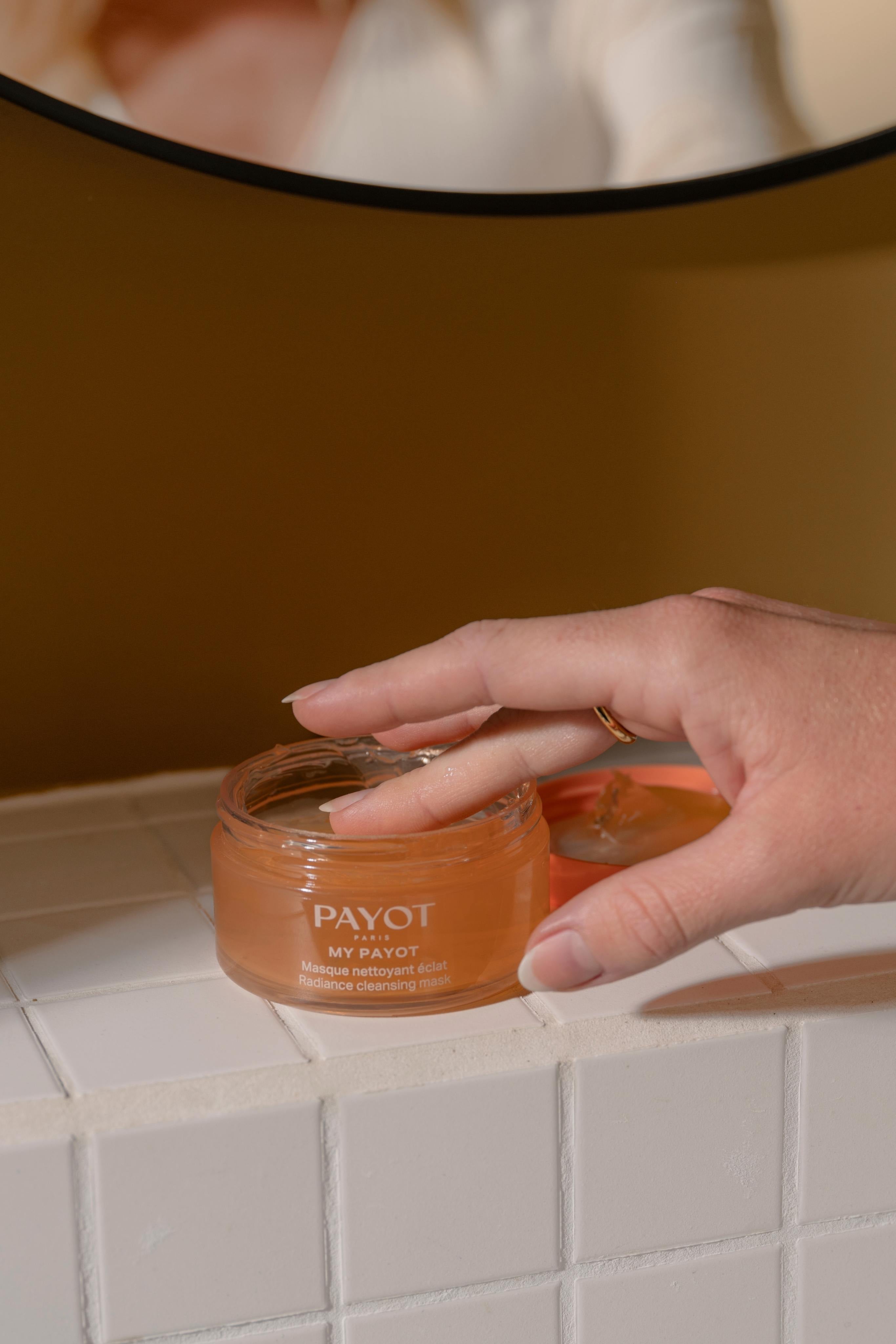AHA, BHA—you've probably already read these acronyms somewhere. Stars of smoothing care, also known as "fruit acids," these exfoliating agents are all the rage. But what exactly do these letters mean, and how do these acids work on the skin? Follow the guide!
1. AHA, BHA, What is it?
AHAs (Alpha Hydroxy Acids) and BHAs (Beta Hydroxy Acids) have one thing in common: they are acids with exfoliating properties. More specifically, they destroy the bonds between dead cells accumulated on the surface of the skin. These cells then gently detach from each other and peel off the epidermis to make way for new cells. The elimination of dead cells from the face is therefore done by chemical action, no need to scrub the skin like with classic mechanical scrubs. Imagine a little Pac-Man gradually nibbling away at his lozenges!
Their differences? AHAs are water-soluble, and act only on the skin's surface, while BHAs are fat-soluble and act both on the skin's surface and deep within the pores. The AHA group of acids is found in certain fruits (malic, tartaric, and citric acids) and sugar cane (glycolic acid), while the main BHA, salicylic acid, is found in white willow and meadowsweet.
2. Why do we love them?
• New skin effect and radiance booster
Powerful keratolytic agents, AHAs and BHAs both offer facial skin a gentle peel and boost cell renewal. It's THE beauty treatment par excellence that literally allows you to renew your skin! The skin, freed from excess sebum and dead cells, regains radiance and freshness.
Micro-exfoliating essence, gently exfoliates the skin to reveal the beauty and radiance of your complexion. Its glycolic acid (AHA) content and Acai and Goji superfruit extracts are a true healthy glow cocktail! You'll love its water-gel texture, which leaves a delicious feeling of freshness once applied to the skin. The epidermis is regenerated, its texture smoothed, and its appearance homogenized.
• The ally of problem skin
Salicylic acid (BHA) is a leader in the treatment of blemish-prone skin and helps effectively combat spots, blackheads, and uneven skin texture. In addition to its exfoliating action, which allows the skin to breathe better, it penetrates deep into pores and unclogs them by dissolving excess sebum and dislodging microcysts that cause blackheads. Its anti-inflammatory properties (aspirin contains salicylic acid!) regulate bacterial flora and purify skin texture. The proliferation of microbes, a major cause of blemishes, is controlled, and the skin is soothed. Salicylic acid also visibly reduces redness and evens out skin tone. It's a friend to oily skin and a formidable anti-blemish ingredient!
• Powerful anti-aging action
AHAs, particularly glycolic acid, have a smoothing and regenerating effect. They improve the elastic fibers of the dermis and stimulate the biosynthesis of glycosaminoglycans responsible for supporting the skin. Collagen production is facilitated and skin tone increases. AHAs thus reduce the appearance of fine lines and diminish the depth of wrinkles. A youthful effect guaranteed!
Glycolic acid boosts the cell regeneration process, which mature skin appreciates because it slows down with age. By accelerating cell renewal, it also acts on pigment spots, signs of premature skin aging, and sun damage.
3. How do I integrate them into my beauty routine?
• No skimping on hydration
AHAs and BHAs are powerful active ingredients that require some precautions for use.
Even though they have moisturizing properties, the main action of AHAs and BHAs is to exfoliate and stimulate cell renewal. To compensate for the dryness that this can cause, we then apply a moisturizing and soothing treatment. You will thus obtain optimal results, especially since AHAs and BHAs promote the good penetration of other cosmetic products! Indeed, dead cells no longer act as a barrier to exfoliated skin, the latter's absorption capacity is multiplied and the benefits of the active ingredients contained in the treatments are reinforced. We recommend combining AHAs and BHAs with a cream enriched with hyaluronic acid, a long-lasting hydration booster, such as the Adaptogenic Moisturizing Cream.
• Be careful of the sun
The skin protects itself from ultraviolet rays by thickening slightly. Exfoliating thins the stratum corneum and therefore reduces this natural protection. Our epidermis becomes more sensitive to the sun and we find ourselves more exposed to its harmful effects on our skin. To avoid dark spots and other unpleasant reactions, avoid sun exposure after a peel and apply these AHA or BHA-based treatments preferably in the evening, especially since cell renewal is much more efficient at night while we sleep.
Of course, if you're going to be exposed to the sun, it's essential to apply sunscreen. The Savory Cream SPF 50 effectively protects the skin against UV rays and free radicals. Its invisible melting texture and formula with Kakadu Plum extracts guarantee optimal tolerance and protect your skin from photoaging.
• For everyone?
AHAs and BHAs are very effective, and some people may be more sensitive to them than others. That's why we always recommend doing a sensitivity test in the crease of your elbow. If your skin is dry or sensitive, choose products with a low concentration of AHAs or BHAs, which you can apply gradually at first. We also recommend avoiding using AHA and BHA products at the same time; instead, alternate them.

